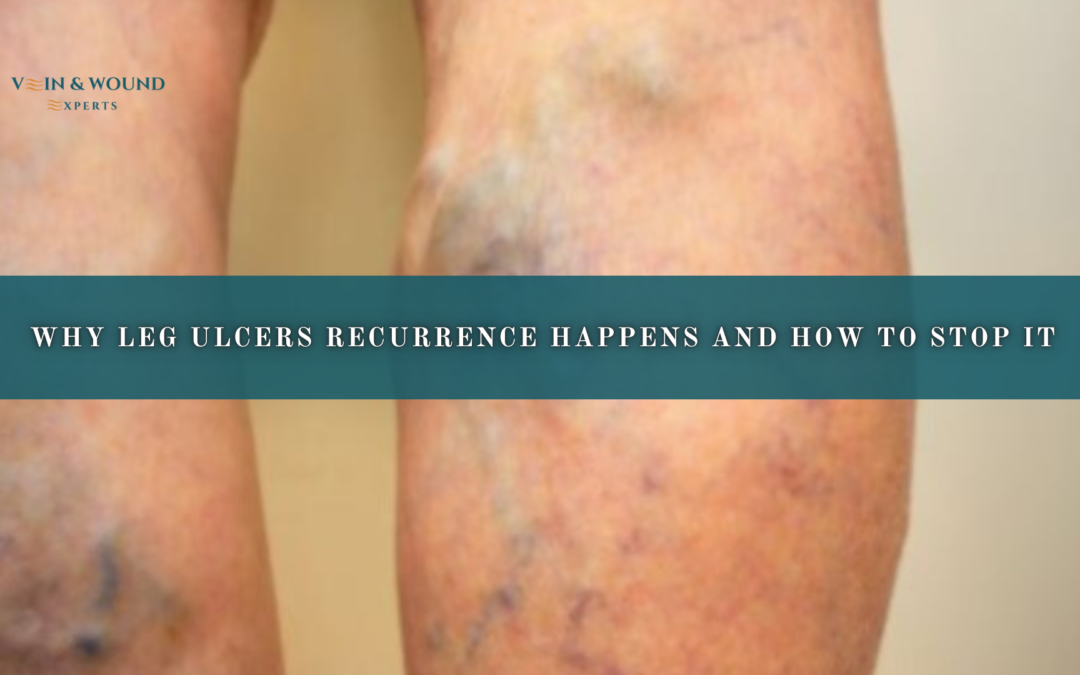Chronic Leg Ulcers and Vein Disease 🦵
Leg wounds that reopen repeatedly can feel frustrating and confusing, especially when the surface seems to heal yet the skin breaks down again. This cycle usually points to a deeper issue beneath the skin one tied to how the veins function. Many people focus only on dressing the wound, not realizing that the true recurring leg ulcers cause often begins within the venous system, where impaired circulation creates long-term stress on the skin. Understanding the connection between veins and skin breakdown is the first step toward lasting recovery.
Why These Wounds Keep Coming Back 🔄
Leg wounds that fail to stay closed typically result from pressure building inside the leg veins. When the valves inside these veins weaken, blood does not flow upward efficiently. Instead, it pools around the lower leg, creating persistent swelling and internal pressure. Over time, the tissues in the area become fragile, oxygen levels drop, and the skin loses its ability to recover fully. This is why venous ulcers often form in the lower leg: the skin is constantly under stress that bandages alone cannot fix.
Surface care such as cleaning, dressing, and elevating the leg can temporarily help, but these steps do not resolve the underlying circulatory problem. As soon as swelling increases again, the tissues weaken, and the fragile skin breaks open in the same spot. What looks like a simple wound on the outside is actually the end result of deeper vascular strain.
Why Bandaging Alone Falls Short 🎗️
Bandages and compression play an essential role in managing swelling, but they are not a cure. They control symptoms they do not correct what created the wound. When people rely solely on dressings, they often experience a cycle: the wound shrinks, appears stable, then reopens within weeks or months. This pattern happens because compression can reduce swelling temporarily but cannot fix malfunctioning veins or restore normal flow.
The skin in the lower legs depends on healthy circulation to receive nutrients, oxygen, and immune support. Without adequate flow, wound healing slows dramatically. Even the best wound care products struggle to work in an environment where the veins are constantly under strain. The wound may close, but it is never truly stable, making recurrence almost inevitable.
How Vein Treatment Creates Long-Term Stability 🩺
Addressing the veins themselves changes the entire healing process. When blood flow improves, the skin receives the oxygen and nutrients it needs to rebuild stronger, more resilient tissue. Treating the veins reduces internal pressure, decreases swelling, and restores healthier circulation patterns. This allows the skin to heal from the inside out instead of from the surface down.
Once circulation improves, dressings become far more effective, and the tissue can finally develop the strength needed to resist breaking open again. Many people are surprised to learn that closing the wound is only the first step securing it long-term requires improving how the veins function beneath it.
Understanding the Deeper Patterns Behind Recurrent Wounds 🔍
Chronic leg wounds rarely appear without warning. Often, the leg shows early signs: swelling around the ankles at the end of the day, heaviness in the calves, tightness after standing, or skin that becomes shiny or discolored. These symptoms reflect the body’s struggle to move blood efficiently upward. Over time, the skin becomes thin, the tissues weaken, and small injuries become slow-healing wounds.
When these wounds reopen repeatedly, the skin tells a clear story about what is happening internally. Healing becomes a process that requires more than dressing changes it requires addressing the flow, pressure, and function inside the veins.
What Lasting Recovery Actually Looks Like 🌿
Long-term healing is possible when both the surface wound and the venous system receive the attention they need. With improved circulation, the skin can rebuild thicker, healthier layers of tissue. Pain decreases, swelling becomes manageable, and the area becomes less vulnerable to minor bumps or irritation.
By understanding why the ulcers recur and how much the veins influence skin health, individuals can make informed decisions that lead to more stable, long-term recovery. This approach gives the wound a chance to close not just once but to stay closed.

Andy Sharifi
Position
